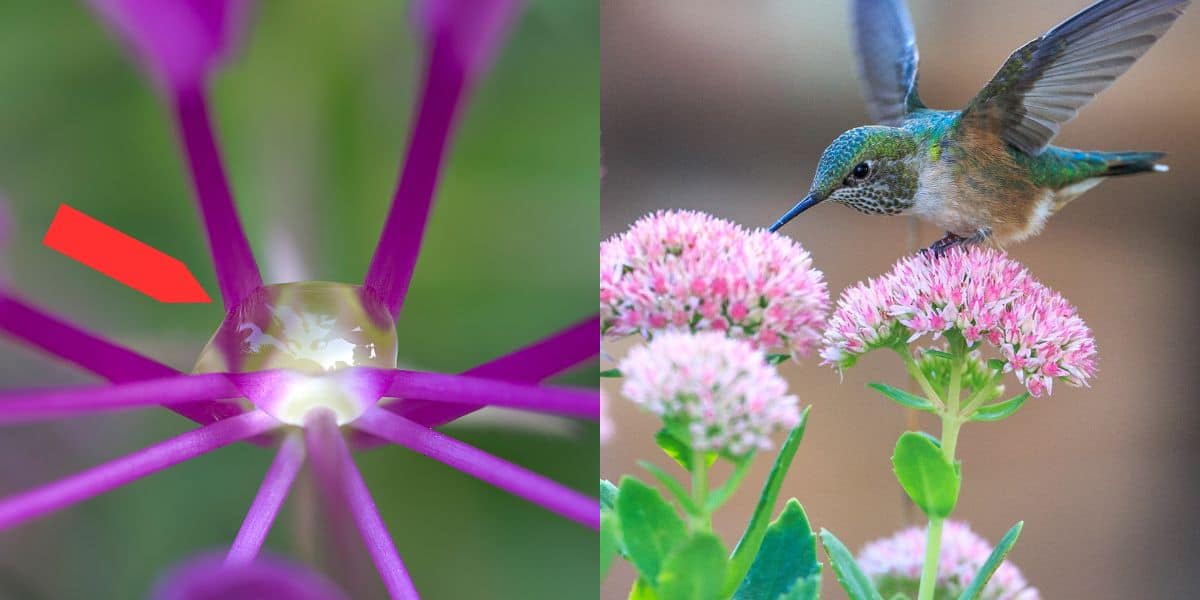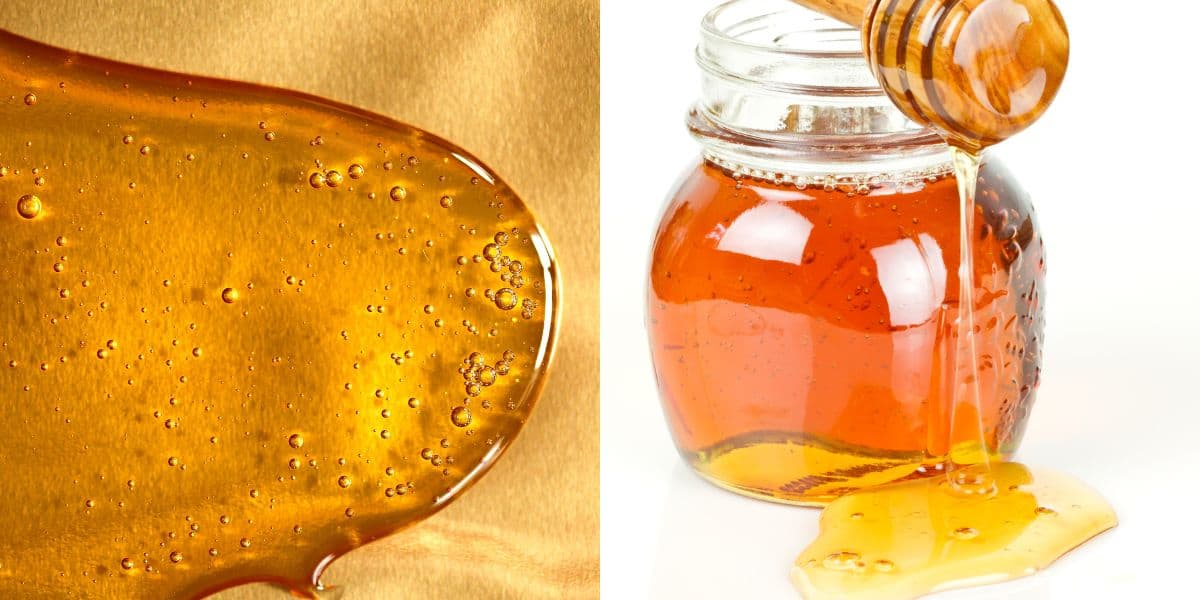Difference Between Nectar and Honey
Nectar vs honey – they’re pretty much the same thing, right? They look similar, both taste sweet and both are valued by bees! But, in spite of several common characteristics, the differences between nectar and honey must be considered. In this article, we’ll explore what sets nectar and honey apart, how bees use each, and why both are essential to the hive.

As a beekeeper, I love the story of how bees make honey. Even after all these years – I still find it an amazing feat. The entire colony invests so much hard work and effort into the process. And well they should, their very survival depends on it.
What is Nectar?
Nectar is a sweet watery substance produced by flowering plants to lure in pollinators. The chemical composition of nectar varies a bit from one plant to another.
But, it is primarily made up of water and sugars – especially sucrose – in various concentrations. Nectar also contains proteins, salts, acids and other micro substances.
This nutritional variety is important. For bees to be healthy, the foods that bees eat must combine to provide complete nutrition. (Just the same as us humans.)

What is Honey?
Honey is a sweet, thick substance made by bees. It is a carbohydrate (energy source) composed of roughly 80% sugars with a few minerals, vitamins, pollen and proteins. The water content of honey should be below 20%.
The exact composition of honey varies from one location to another and depending on the nectar sources used to make it.
A single bee would make a very small amount of honey during her lifetime. Therefore, this is a large group effort with thousands of individuals working together for colony survival.
In most cases, plant nectar is collected by honey bees and used to make honey. (However, in some situations – bees gather the sweet secretions of aphids – to make Forest honey or Honeydew.)

Main Differences Between Nectar and Honey
While both nectar and honey are very similar – they differ in form and function.

Role of Sugar Concentration
The sweetness or sugar concentration of nectar varies across a large range. From a relatively low concentration of 8% up to 50% for some plants. This explains why some flowers are more attractive to bees than others.
However, it is also important to understand that the climate and weather conditions for an area has a direct affect on the quality and quantity of nectar produced by different flowers.
Areas experiencing extreme drought may be in a nectar dearth – when little or no plant nectar is available.
Also, some plants produce nectar that has a lower sugar concentration (less sweet) – but they produce large amounts of nectar. This is a big benefit to a hungry bee colony living nearby.
Collecting Nectar
While gathering nectar, bees help flowers by providing pollination – even though that is not their intention.
Working the best food sources first, honey bees collect nectar by inserting their proboscis (tongue parts) into the flower and sucking up the liquid.
These worker bees, store nectar in a special organ called a “honey stomach” for the trip back to the hive. This is not their true digestive system – honey is not bee vomit.
But, the nectar may mix with some pre-digestive enzymes. Back at the hive, it is unloaded to other bees who will complete the conversion process.
The end result is a honey – a thick, enzyme-rich, very sweet liquid that was created from a less sweet watery liquid.
How Bees Use Nectar Vs Honey
While the main reason for nectar collection is to product long-lasting honey, a worker bee could have a quick snack while in the field.
Nectar/honey as carbs are an energy source that helps keep those little wings flapping. However, the focus is to produce a lot of stored honey to help the colony survive during the cold months of the year.
FAQs
The main difference between nectar and honey is their composition. Nectar is primarily water with small concentrations of sugar. Honey is mainly sugars with only small percentages of water.
Humans can consume reasonable amounts of nectar. However, the high water content and lack of natural preservatives does not provide a good reason to do so.
Nectar is not considered to be as nutritious as honey because it is not as concentrated. Also, nectar lacks the bee enzymes that converts sugars to simpler forms.
Nectar does often have different flavors but due to the lack of concentration – you would not find flavors that are as distinct as those of different types of honey.
A sweetener such as Agave nectar or Maple Syrup are made from raw nectar or sap but are technically not the same thing as regular flower nectar collected by pollinators.
Final Thoughts
While nectar and honey are closely connected, they both serve separate roles in bee life and the ecosystem. Nectar lures bees to the flowers and this helps them reproduce and make seed. Honey is the perfect over-Winter food to help bee colonies survive the cold months. Whether you’re a beekeeper or just curious about nature, it’s fascinating to see how something as simple as flower nectar becomes the golden treat we know as honey.

